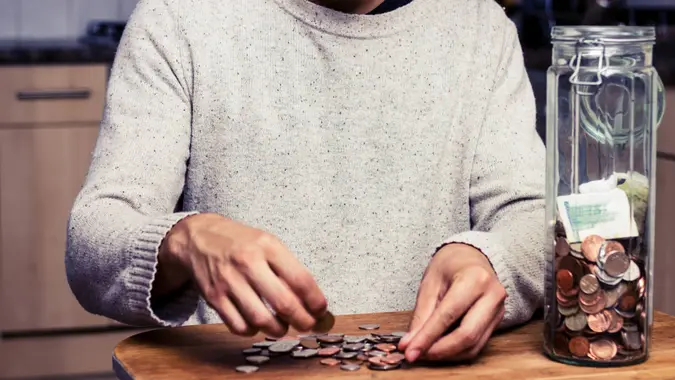4 Ways To Use Bank Statements To Track and Improve Your Spending

Commitment to Our Readers
GOBankingRates' editorial team is committed to bringing you unbiased reviews and information. We use data-driven methodologies to evaluate financial products and services - our reviews and ratings are not influenced by advertisers. You can read more about our editorial guidelines and our products and services review methodology.

20 Years
Helping You Live Richer

Reviewed
by Experts

Trusted by
Millions of Readers
With banking apps taking over traditional branches, the bank statement has become a bit of a relic. But these snapshots of your monthly financial life offer a wealth of information to help you stay on top of your goals.
Here are 4 ways you can use bank statements to track and improve your spending.
Also read on how the middle class can sell various things to build their savings.
1. Know Your Balance
The art and science of balancing a checkbook seems to have gone the way of, well, the checkbook. With most transactions now being conducted electronically, many people don’t know how to balance your account to make sure no errors have been made, either by you or the bank.
Here’s a quick tutorial.
- Start with the ending balance on your bank statement.
- Add in any deposits (credits) made to your account since the statement’s closing date.
- Subtract any withdrawals (debits) made from your account since the statement’s closing date.
- Subtract any fees that have been assessed since the statement’s closing date.
- This balance should match what you think you have in your account.
- If your record doesn’t match, review your math first. You may have noted an amount incorrectly or neglected to subtract something you spent. Or, you may have added or subtracted something that was already reflected in the statement.
Mistakes by the bank are rare, but they do happen. If you think your bank made an error, double check your online banking record and then call the bank. Ask them to research the discrepancy to find out why their records differ from yours.
2. Monitor Recurring Debits
You may use your debit card or bank ACH (Automated Clearing House transactions, commonly called ‘direct debit’ – the opposite of ‘direct deposit’) for monthly transactions, like rent, utility payments or subscriptions. Keep an eye on these to make sure they are correct. Watch for both the amount and the date – some regular payments, like utilities, can vary depending on the number of days in the month.
In the case of subscriptions, check to be sure that the amount is what you expect – these can sometimes go up unexpectedly, either because a trial period expires, or the company raises the price. They’re supposed to notify you but it’s easy to miss the email. And you should regularly assess whether a subscription is still needed or not. When was the last time you watched Hulu?
3. Watch For Unauthorized Transactions
Carefully checking your bank statement is a great way to find out if someone has unauthorized access to your account. Cybercriminals and identity thieves sometimes ‘test’ account information by making a small withdrawal – sometimes just a few cents – to see if the account is active and funded. If you see a small debit like this that you don’t recognize, report it to your bank right away. It may prevent a much bigger issue down the road.
4. Inform Your Budget
Your bank statement gives you the ability to look at a month’s worth of spending in one place. You can add up all your grocery purchases, gasoline purchases, dinners out, and other discretionary purchases to see how much you are actually spending. This is the first step in creating a budget you can live with.
If you don’t use an app to track your spending, you can still set up a budget with your bank statements and a spreadsheet. Start with the standard categories (rent or mortgage, utilities, insurance, car payment, etc.) – you can add more categories as you go along. Grab your last six to twelve months of bank statements and categorize each transaction. Some online banking apps will let you export your transactions to a spreadsheet to save some time.
Pro tip: You shouldn’t have a category called ‘credit card payments.’ Break those down so you know what you use the credit card for – gas, groceries, etc. You can have a line item for your credit card annual fee or credit card interest if you carry a balance, but each charge should go in the proper category.
There’s a reason that bank statements still exist despite the advances in online and mobile banking that keep everyone up to date. While the days of getting your statement in the mail and using the form on the back to manually balance your account are gone, the usefulness of these monthly missives hasn’t changed. Whether you export your statement from your online banking portal or view it online, your statement can help you stay on track.
More From GOBankingRates
 Written by
Written by  Edited by
Edited by 

























